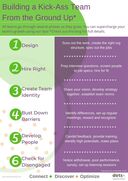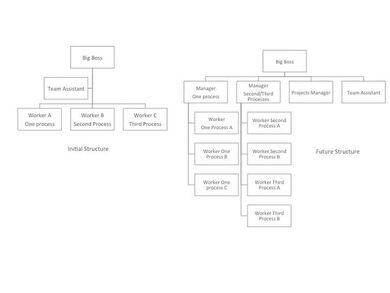Words Have ImpactWhat you say, really matters to your team. I've said it before, employees are always watching. The tone you use is important, but what you actually say can reverberate...for years!!
‘You have no idea how long something you say can stay inside someone’s mind!’ I read that quote recently and it reminded me how important it is to be mindful of my words, particularly with those who work with me. Words can lift people up or - break them down. A leader or manager's words can have such a lasting affect, especially the critical ones. Here is a great leadership book for more great tips - The Leader's Voice by Clarke & Crossland. When I reflect on comments that sit with me ‘You use unsophisticated language’, and ‘You’re intimidating’ are the ones that still ruminate for me from leaders I reported to decades ago!!! Ugggh. I'd like to erase them but they still remain in my head and they make me question my approach with clients.
0 Comments
Are you hiding the real you from work?
Can you sing? Play the trumpet? Do you bake pies? Do you laugh with your full belly? Do you snort!? Do you paint watercolour or absolutely love to garden? Do you love hip hop or can you rap? How many on your team know who you really are? Does anyone? Sadly many of us hide our full self from work, or worse….from our teams. We so often buy into this notion that we have to fit a particular stereotype to be a successful leader - it is all business, all the time. When I worked in corporate, there was an executive that wasn’t particularly liked. In fact we had many complaints about her behaviour in HR. She was an ice queen. She was ‘perfect’. She hit every deliverable out of the park, and then some. But man, she pushed her people hard! How Do You Build Your Team?Updated: February 2021
Most corporate team off sites (done onsite in the boardroom with food catered), are done with the intent of having a team building experience. You know what I’m talking about? One of those meeting when the team gets together away from their usual desks. A caterer brings in two Diet Cokes and three cans of Sprite for a team of 7. The food is the same each time, usually some kind of sandwiches, and the last person to select gets stuck with the egg salad. For team building you might add an exercise or two like “If you were an animal, what kind would you be and why”. With a few laughs and full tummies do you really expect your team to be more successful? Unfortunately these team building activities seldom generate success behaviours. Management may think team building happens when they invest in a few meals together, but the reality is your team just hopes for an early exit home. Seldom does the 'building' of a team really occur. Do Your Employees Hate Work?When great employees don’t get what they need to thrive, they wither and become a zombie before your eyes.
Has your previously amazing rock star employee turned into one of the ‘working dead’..... that quit, but stayed? How would you know if you have disengaged employees? Sometimes, it is not very obvious. Zombie employees may get sick frequently; they may complain or stew about issues more; they are more detached; they increase the number of breaks or take a long time to accomplish work; or, they seem more frustrated or annoyed. When team members, who were previously quite involved and full of life, become quiet or just don't bother trying anymore - there is a good chance they're checking out. It is becoming quite an epidemic. According to Gallup less than 13% of employees are an engaged worldwide – that means many people hate their jobs. With a concerted effort you can bring them back from the brink while preventing the further demise of your very best people. Rebuild Team Trust After LayoffsSo your team has been restructured and the dust finally settled.
Now, you’re supposed to go back to ‘business as usual’ but things feel far from normal. As the leader, you’re in a tough position because everyone on your team turns to you for answers and clarity. But, you're as much in the dark as they are, maybe a bit ticked off too....so what do you do? Rest assured you’re not alone; heck, you can’t read a newspaper or hear a business report these days without learning about a company cutting back, laying off or reorganizing. Just like you, there are hundreds of leaders trying to find their way to get back on track, regrouping but also trying to rebuild trust of the ‘survivors’. Poor Communication = No ConnectionThese days, with all the tools we have available, we are far more connected and capable of staying in touch than ever before!
So don’t you find it a bit ironic that in today’s workplaces, lack of communication remains one of the biggest issues for employees? Regardless of the industry or size of company! Here’s the thing - if your team doesn’t feel heard, they don’t understand the direction of the company, never get constructive feedback, or they don’t think you care about them as a person, then why would they give you their best work? I get it! Difficult people on your team can zap your energy ‘getting on your nerves,’ making it a pain to work with them. Well guess what, I’m here to tell you that pretty much every difficult person you will ever lead, can be a great asset; you may even find them not so difficult after all! This series has been dedicated to helping you figure out how to tap into hidden potential of difficult types and minimize the frustration: - Part one when you’re challenged with a “The Know All” (TKA) - Part two for the blow it up Revolutionary type (TNT) or - Part three the Take No Prisoners (TNP) personality type To wrap up the series, I’m going to help you with one seldom discussed, often misunderstood and a very draining style to work with… the Constant Critic (TCC)! You know this type; they tend to be appear very negative. Just like Eeyore (from Winnie the Pooh) who constantly points out the negative in every move. They don’t cause big drama but they do seem reluctant to get onboard with anything new, usually based on some prior experience. The Constant Critic profile:
Meet Pete – “Mr. Quiet Dissonance” Pete (name changed) has an accounting background and works as a Director, Strategic Planning & Performance for a large Retailer. He's been an executive for 5 years but has been with the company for over 20. The 3 people who report to him quite enjoy working with him. He reports to Marnie (not her real name), VP Business Performance who was recently promoted. Marnie and I have been working together on improving her direct team’s collaboration and she asked for help with Pete, in particular. Pete is commonly referred to as the ‘company historian’ and has lived through a couple of mergers, several name changes as well as take over from a US-based company. Marnie was forewarned that Pete seemed disengaged before she took on the team.
Pete is a great example of the Constant Critic personality type! The good news is Pete responded positively to Marnie as soon as she began implementing strategies we spoke about. Her action plan included:
At this point, her focus is on developing more of a trusted relationship, and that maybe all it takes. Marnie's increased interest in his experience seems to have had a positive impact already; the team has noticed Pete becoming more participatory – no more crossed arms in meetings and some have even commented about him being more sociable. The benefit of having a TCC on your team – great devils advocate, can help you develop persuasive arguments, often sees a different perspective and helps to reflect on pending plans. Often they have learned from past mistakes, can be a historian with very helpful information to draw upon. The key to leading a TCC – remain positive, redirect negativity, stick to facts and data that support positive outcomes. Help them see the impact of their behaviour on others if it becomes a problem. Ask the TCC to reframe their initial reaction toward a more positive response. Caution leading a TCC – do not get pulled into negativity. Limit how much time you give when they become negative. For every difficult type of person, there is a way of changing YOUR perspective about what contribution they bring to your team. It may take a little effort, but drawing upon unique perspectives can be a competitive edge for your team. If you are dealing with a difficult person on your team (or even your boss) and you’d like help to figure out how to communicate better with them, send me an email. There are just as many strategies as there are difficult personality types! Bonus tip: Can you see a bit of yourself in Pete? Have you been 'shutting down' at work, avoiding colleagues or find yourself to be increasingly contrary? You may be a Constant Critic or are heading that way. Time to reflect on how negative you may appear to others:
Photo CC0 @bkotynski Unsplash
According to Gallup State of the Global Workplace, 85% of employees worldwide are not engaged or are actively disengaged in their job. “The low percentages of engaged employees represent a barrier to creating high performing cultures around the world. They imply a stunning amount of wasted potential.” Wasted potential. How that phrase resonates with me! Death by Administration I'm sad to say, I was one of the walking ‘wasted potential’ not too many years ago. It was a dark and miserable time. My employer was doing a massive restructure, removing spans and levels of management and it was my job, as the HR lead, to implement it for my division. Unfortunately the process they undertook was more of a spreadsheet exercise, versus strategic. So the work I loved and excelled at suddenly switched from senior level advisory work to a massive load of mundane administrative tasks Every. Single. Day. , and it went on for months. This kind of work was my worst nightmare and even though it is hard to admit..I have never been very good at mind-numbing administrative work. It just wasn't the right work for me. What a complete waste! Wasted potential. People can’t thrive when they are doing the wrong work. It devalues them, misuses talents and creates unnecessary pressure. During stress-filled change, leaders can fall asleep at the helm; too busy ducking for cover, they completely overlook the signs of utter disengagement around them. Don’t waste your best resources like that; you will surely lose your highest potential people when you don’t pay attention.
Expert Lessons A great way to stem the tide of employee disengagement is to tap into the abilities of EACH and every person on your team. Get people doing the right work utilizing their best skills, long before a change occurs. According to Gallup's survey analytics it is your high potential talent that will take a walk if they are not engaged, long before the others. These top talent are the experts to learn from! Here is what top talent say will help keep them: Lesson 1
Lesson 7
Engagement Counts The best leaders demonstrate they care about each and every team member by taking an interest. They pay attention, particularly during stressful times, leveraging potential vs wasting it. They make it a practice to develop potential, all the time. They allocate work in a way that plays to their people’s strength and they keep them connected to the bigger picture. When you demonstrate YOUR engagement, harnessing the potential of your best and brightest, you are guaranteed better results for highly engaged employees. If you have a disengaged team (or team member) or are leading through stressful times and need support, I’m only an email away! I help leaders grow and develop by working with them through the toughest of times. I offer a 30-minute free consult. I want to hear from you, tell me about your own experience in the reply section below. Image: CC0 Creative Commons/Pixabay
Watching political leaders wrangle for position, launch smear campaigns and talk trash about each other sure fires up the leadership coach in me. Grown adults identified as so-called “leaders” who choose bully tactics, intimidation and demeaning others as their campaign strategy gets to me every. single. time!
The Canadian province where I live is currently embroiled in a smear-filled provincial election fraught with insults and put-downs; it is such a miserable and appalling ‘gong show’ - wish I could bong the gong to put an end to this conduct! I am not naïve enough to think anyone could simply fix what seems to be wrong with such political behaviour overnight but I hope I live long enough to witness a group of leaders stand and face the masses, clearly state their position, demonstrate what they believe in (without being wishy-washy) and then once elected, set a concrete plan working to get it done in a professional “principled” fashion. In my books, everyone in a leadership position, regardless if they’re running for office or managing a team of 2-20,000 people can be a better leader by leading with principles. My Kind of Principled Leadership
Note: Seeking, receiving and acting on feedback are skills many of us need to develop further. If you have yet to receive constructive criticism from your people about YOU, it is a good sign you have room to grow. If you have received it, consider it a great gift! Now, how did you address it?
The Core Principles in Action One senior level corporate leader I worked with (Katrina McGee….yah, not her real name) truly exemplified the core principles I look for as a Principled Leader. Such a pleasure to work with. I recall one time we were working on a very sensitive and difficult message about a pending reorganization (sadly, one of many). It was a very stress-filled period for her. She painstakingly agonized about every change to the department and fretted over each and every word choice because she personally felt the impact of the tough decisions being made – people truly mattered to her. We were working in her office around 9pm at night, long after others had gone home, when we heard the cleaner in the outer office area singing quite passionately to himself with headphones on. He passed by her door a couple of times - clearly he hadn’t noticed us but we did him. Instead of getting annoyed at the “I hope he buys you flowers” being belted out, she asked if we could take a quick break. She collected up the garbage from around her room and grabbed a fresh bottle of water from her sideboard and went to the outer office. She startled him as she emptied her bin into his cart and then took a moment to chat, giving him the bottle of water and acknowledged his singing prowess. It was obvious they had spoken before as they shared a little chuckle before she returned to the office. You see, she treated everyone with that level of respect and consideration - from the cleaner to every member of her global team to her C-suite colleagues. So genuine was her care for everyone that I can honestly say anybody who ever had the opportunity to work with her would go to the end of the earth to support her agenda. A master at Principled Leadership I would say! I know most of you want to be that kind of leader too. Here are some of the core principles that make all the difference to the teams who look to you as a leader: People Matter Principled Leaders put the interests of people first. Their every action sends a message that everyone is equal and their ideas and opinions matter. It doesn’t mean they will do everything people want, but they ensure their teams feel heard and acknowledged. Respect is Earned Principled Leaders operate with respect for others in everything they do – there is no put down, no intimidation or bullying. They gain the respect of others by treating others fairly and with respect, regardless of their position. Attitude Counts Principled Leaders have a positive attitude. They act in a positive, genuine manner, even during some of the toughest times, ensuring everyone remains calm and productive. Consistency is the Key Principled Leaders are who they are regardless of the situation. Whether riding the elevator, walking through the office or sitting in a board meeting, their every move is consistent and in-line with their good character. Curiosity is a Game Changer Principled Leaders love learning and knowing but will acknowledge openly they actually don’t know everything. They ask a million questions of people – how does that work, why does that happen, why can’t we do that, how can we make it happen. This inquisitiveness comes in handy, seldom are they duped and inevitably they know exactly who to go to if help is needed because they understand the roles/process in their team as well as other groups. Delivering is their Jam Principled Leaders are obsessed with getting done what they set out to do. They are doggedly determined. They make sure all of their team understand the mission and remain steadfast in overcoming whatever obstacles are in the way to deliver on their promises. Can you measure up to being a Principled Leader? Of course you can! You’re likely well on your way if you took time out to read this article and thought about what you currently do! Keep Dots Leadership Solutions in mind as you determine your own development needs and plans for improvement. I’d like to be your personal and confidential leadership development guide. My coaching clients will tell you I hold them accountable to deliver against any goals they set passing along many tips and tactics to help them be a Principled Leader. My style is direct (don't worry, I won't bong the gong on you), yet highly supportive and I bring 25+ years of experience working with leaders from many different industries both big and small – give me a call or drop me an email when you’re ready. It could be you’ve heard of others being let go; you’ve seen a shake up at the top leadership levels or you suspect your new boss is really here to restructure. Any of these scenarios can make you uneasy about your own job stability. And once the anxiety sets in, it can affect your normal ability to focus, make you dread every unexpected meeting or just make getting up to go to work, feel miserable. Given the percentage of our life we spend at work, this ongoing negative stress can be bad for your health so it is worth finding productive techniques to take back control. If you are one of those people sensing impending doom, I’m here to say relax, don’t let it unnerve you. Instead let me show you how to actually take full advantage of it. While I can’t guarantee you won’t be on the chopping block, I can help you reframe your mindset and give you hope for a much more positive outlook. Simply by learning how to Duck, Prepare to 'Jet' and/or get ready to make a Career Pivot!
Duck! Here is how ‘Duck’ worked for one of my corporate clients: I’ll call her Eileen; Eileen had a new boss, a bossy boss with a big ego, who she didn’t see eye-to-eye with. My advice was this - get on with the work, don’t act in an artificial way, just keep the focus on doing a good job. It wasn’t always easy. Eileen asked clarifying questions to understand what her boss wanted and then delivered accordingly. She gave the boss no cause to centre her out, no angry or emotional outbursts – she kept her head down and managed her emotions. (We would often debrief after the tough days). We found that when she focused on only what her manager asked for, it became much easier for her to cope day-to-day. This gave her personal control. She controlled her reaction, her output, and her thoughts. The goal was to deliver, and deliver she did! Only those close to her ever knew the true feelings of doubt and worry. She is a great example of how positively shifting your state of mind gives you the ability to work through job stress. She proved to me that anyone could overcome the dread just by changing your mindset! This concept not only reduced stress for few years until the boss moved on, but she said it taught her to become more focused and action oriented. Every Exit is an Entry Somewhere The other strategy is to get ready to 'jet' (aka. leave, exit, vamoose, hit the road). This means ACCEPT that you are going to go, stop worrying about it and begin your own transition now…while you’re still working! I always tell my clients “you have the gift of time so lets use it to your own benefit.” Think of it as extra paid time to regroup, plan and prepare for your next move. Here are some action steps I suggest to create change, on your own terms:
Create an action list with target dates to be done by:
This mind shift is a game changer to overcome the oppressive feeling of dread. You invest in yourself and take back some time. If all goes really well, you’ll receive a nice little severance package AND start your new job shortly thereafter. Or you may land a great job before they send you packing – either way is a positive outcome! Consider a PIVOT! Treat this as a defining moment in your career where you sit back, take stock and re-evaluate what YOU want for your future. It’s the perfect time to consider an intentional career change in a completely different direction! Maybe there are departments you’ve had a yearning to join but never had the courage to apply? Perhaps you may have been thinking of starting your own business, or you’ve had a side hustle that you should consider if you can do it full-time? I’ve had clients take this opportunity to plan to return to school, become certified in a speciality or finish higher level education that later jettisoned them on to a successful new chapter in their life. Regardless of where the pivotal change takes you it usually needs a catalyst to push you over the edge and make that wishful change happen. Turning the dread into a meaningful plan can make all the difference. Need a Career Lifeline? I’ve supported several leaders through this uncertainty, waiting for the day they will be let go. I’ve also sat on the other side, breaking the news of downsizing to quite a few people and I can say with 100% confidence that everyone finds a new path and 9.8/10 times they end up happier than before. Rather than let the worry drag you down or make you sick, I say shift your thinking to make it work for you! The big trick is finding ways to take back control, accept change quickly – better yet, embrace it! If you find yourself stuck and want to work with a professional to review your options, create a personalized career plan, hold you accountable or give you candid feedback, advice and insight, give me a call or send me an email! I offer a 30-minute free consultation. Regardless of the scenario that has you anxious or worrying about job loss, I’d love to help you ‘connect the dots’ for the next phase in your career! Image: CC0 Creative Commons
Well you’ve made it to Part 4 of our series, Building a Kick-Ass Team From the Ground Up! So far we covered the foundational phases of building a kick-ass team, including the the ‘Start Up’ Phase , the ‘Building the Team Identity’ Phase and the ‘Bust Through the Barriers’ Phase. Now, your team is in ‘the flow’ and it’s time to make an important leadership shift!
As a people leader, once your team has reached this stage of maturity you’ll find yourself being needed in a different way. Let’s explore what you can do to ‘amp up’ your team’s success during what I like to call…the ‘Kum Ba Yes’ phase! Kum Ba Yes! Phase Did you ever go to summer camp, sit around the campfire and sing Kumbahyah? Maybe I’m dating myself. It symbolized the moment when a group of virtual strangers became friends as they were far away from home and surviving together. That is where the The 'Kum Ba Yes!' Phase gets its name. This phase is a time in your team’s development where people are getting along, they’re joined together, they know what their doing – they’ve become a real team! You’ll know you’ve reached this phase when you begin seeing signs that your team is operating effectively:
For the most part, you should see your people getting along, helping one another to problem solve and working towards departmental goals – productivity should be on the rise! So what should you do now that the team seems to need less of you? Well, your leadership challenge is to move from being “directive” (taking control) to “observational”. The idea here is to let up on the reins, trust and empower your team to operate with minimal intervention while guiding quietly from the sidelines. This will not only help strengthen individuals on your team, but it will also help to improve your overall team dynamic and build resiliency. Let’s take a look at some actions you can take to help strengthen your emerging Kick-Ass team during the 'Kum Ba Yes!' Phase: 1. Set Up ‘What’s Your Jam?’ Discussions – this is a good time to encourage individuals to stretch themselves to build new skills and find development toward longer-term career goals. By demonstrating an interest in their future your peeps will see you are here to support them, not just to get the work done but to help them grow. Meet with your people one-on-one to discuss their development plans. Yes, I’m talking even if you have a team of 30! Take a half hour to discuss their individual development – no not performance, their development (there is a difference). The focus should be on the individual and their career aspiration. What activities have been most interesting? What are their strengths? What are their career goals? Where do they see themselves in the future? And what steps are they currently taking? Then, determine a plan for how can you help them move forward. Don’t know what to ask at their ‘Jam Session’ - Check out this online guide. 2. Build It Up – book time quarterly with your whole team to depart from work and focus on building relationships! If you have budget, consider bringing in an external consultant to take you through a workshop on behavioural styles and communicating. If not, you can also incorporate easy and fun activities into other meetings such as when you have a project review or an all-hands update. Any activities that encourage learning about each other, working on a non-work initiative or fun experiential activities will strengthen the community of the team. 3. Feedback Gift Giving – I always say feedback is a gift, not sure who I heard that from. You can either accept it or put it on the shelf and disregard it. All of us want to receive feedback from our manager to know how we are doing, but feedback doesn’t only have to come from the boss! If you as the leader create an environment where your people feel safe and they trust each other, you can encourage open candid dialogue. This allows each team member to provide insights, reactions and suggestions to one another, which creates a culture of seeking and giving feedback – it’s a powerful tool! Recognize and support your team members when they make a point of acknowledging or provide constructive feedback. As mentioned in Part 3 Bust Through the Barriers phase I suggest carving out time at routine meetings to seek 'shout outs' to build a supportive, 'safe' work environment. Kick-Ass Team Tip - Pay Attention to Millennials In Gallup’s report, How Millennials Want to Work and Live it outlines that in today’s workplaces, our latest working generation are not getting enough feedback even when they ask for it. In fact, less than 20% feel they receive routine feedback, yet they seek it more than any other generation! So if you have Millennials in your team, pay close attention to this step! 4. Get Constructive – develop the art of constructive criticism! And it is an art! So often we shy away from criticizing anyone – when we grew up, most of us were taught ‘if you don’t have something nice to say, don’t say anything at all’. Well that probably means we didn’t receive much constructive advice! So here’s my take on it. Constructive criticism is no different than good ol’ sound advice! As the leader of a Kick-Ass team, part of developing your people means giving them candid advice, in a timely manner and particularly at this stage of team development – people do best when they are receiving regular feedback both positive and constructive - this includes you! Here are a few tips to keep in mind:
a) 'Thank you for preparing the report on demographics; it provided some good insights. I noticed you seemed frustrated when we discussed it with the client as they tried to ask questions. It is frustrating when someone cuts into your thoughts, but I think the client was trying to clarify what you were saying. Just be aware of your reaction and be prepared that clients will likely want to ask questions along the way.' b) 'Great effort on the report, I do see there are a couple of things which could be improved. The font is a bit small and it would be good to standardize the same font throughout the document.' c) 'You handled that meeting very well with the team – they were a rowdy group. Next time you may want to pause or put your hand up until they quiet down instead of talking over them.' Kick-Ass Team Tip – Help is here! If you have particularly difficult feedback to give to someone, consider talking it out with someone before you approach the person. Have them check your tone and check how it comes across. When you reach the 'Kum Ba Yes' Phase it means you’ve done a great job managing through some challenging times with your team. They are already in a good place, but they need a different kind of leader now to continue to be strong and resilient through change. During this phase, you may find you need some help in conducting team building and communication workshops, so give Dots Leadership Solutions a call to create a custom session for you. We can also help you prepare for any difficult conversations that you are putting off or provide a framework for your team’s development planning! We want to hear from you - comment below about your leadership journey in getting to Kum Ba Yes! How did you release control and move them along to full effectiveness? Watch for the next instalment on Building a Kick-Ass Team From the Ground Up – Part 5 – High Performance R Us How to Deal With 'New Team' CONFLICTWelcome to Part 3 of our series, Building a Kick-Ass Team From the Ground Up. So far we covered the initial two foundational phases of building a kick-ass team: The Start Up Phase and Building the Team Identity. Now, it’s time to talk about everyone’s favourite topic – CONFLICT! Truth is, conflict creates barriers to success of a newly forming team. At some point, even with a solid team that’s working together, there will be bumps in the road. It can get wobbly. Think of team building like first starting to ride a bike without training wheels. First you’re up and rolling along, but then you may begin to wobble. You're careful you don't overcorrect in an attempt to save yourself or you know you'll fall flat on your face…it is the same for a newly formed team. So, here’s how to handle your team’s wobbly period the right way: Building a Kick-Ass Team From the Ground Up Part 3 - Bust Through the Barriers VideoWe all need to feel seen! Developing the Team IdentityWelcome back to our series ‘Building a Kick-Ass Team From the Ground Up’. In the first post Part One - The Start Up Phase we covered the initial phase of team formation. In this blog, we’re moving on to building the team’s identity, which is essential for establishing team norms so that everyone knows how the team operates.
In this phase you will be hands-on and sometimes directive. This is a time for obtaining your new team’s commitment, setting well-defined expectations and clear objectives. This is also a critical time for you, as the leader, to demonstrate your commitment and follow through. Lets look at the key steps to founding your team with an identity each member can embrace. Building A Kick-Ass Team is RewardingBuilding a kick-ass team is one of the most rewarding experiences for any leader. To see the team YOU established succeed and thrive creates a sense of pride and satisfaction like no other. Do you remember how it felt to be a part of an awesome team? You were in sync, you had fun, and you were an unstoppable machine. Everyone was connected and continuously driving in the same direction to get stuff done. This blog marks the beginning of a series of posts that will walk you through the full cycle of not only building a team, but also supercharging it! Today, we start from the beginning, which involves creating your vision, crafting roles and selecting the right members. Over the course of the next few months, I will address other topics such as the settling in period, navigating through difficult times, celebrating successes and preparing for transformative windups. The “Kick-Ass Team Building From the Ground Up” series will also include tons of practical tips and tricks for boosting your own leadership capabilities, so please follow along for full access to an abundance of insight and advice. Free Tip Sheet: Building a Kick-Ass Team From the Ground Up Without further ado, welcome to part one of our series – The Start Up Phase! There are countless reasons why you may be forming a new team right now. It may be the beginning of a new project or initiative, there may be an important new business direction underway and you have to pull a group together or you need to 'restructure' due to growth. Regardless of the reason behind the new team formation, here are your steps to get started: 1. White-Boarding Let me preface by stressing one thing – do not skip this step! Even if you’ve been handed a group of pre-selected individuals to begin with, I encourage all of my clients to start with a blank slate. Before you go sticking boxes on an org chart, ensure you are crystal clear on your own vision. Grab a whiteboard and begin considering these key questions:
Having this information readily available will assist you in figuring out which roles/functions are required on the team and what work you’ll be in charge of overall. It will also provide a basis to review the team’s progress once set up. 2. Suss Out The Work When beginning to build a team, it’s common for leaders to immediately think about managers – how many they need, who they will be etc. But there is a major drawback to this approach. What tends to happen is teams end up with too many people trying to lead without clear and distinct accountabilities – and you know what they say about too many cooks in the kitchen! Instead of beginning with management, I say do a bottom-up build! Start with considering the day-to-day work of your team and allow your structure to develop according to what actually needs to get done, not how many departments you want. In order to ensure you stack your structure with the right number and level of roles, consider these questions first to group like-functions:
Your answers to the questions above should start to create a picture of how many people you really need to DO the day-to-day work? And in contrast, how many managers are actually required to manage the people doing day-to-day work. If you can, quantify the output that will be delivered – you may have to make a few assumptions at this point – and think about the ROI (return on investment) of your resources. You tend to get bigger return with ‘doers’ than with ‘managers’. Here are some common pitfalls that many leaders face during this step of a new team formation:
3. Map Your Structure - Org Design This is when you get to move the boxes around. A good organizational design drives efficiency and success. When creating an organizational structure, I recommend an accountability-based approach – that establishes a hierarchy with clarity built-in so everyone will know who is on the hook for what. Clear accountability is a critical success factor for a smooth running team. Also vital, yet sadly overlooked, is ensuring that each Manager fully understands that their responsibility includes the development of all team members, not just direct reports. This includes formalized succession planning for managers to have replacement plans for their own roles – setting this up in the beginning will make your job a whole lot easier. Now layout a future focused org structure identifying how each role reports. Every role on the org chart needs a unique and clearly defined accountability in order to reduce confusion and improve self-sufficiency. Notice we haven’t talked about the people yet? This is done on purpose. Million Dollar Tip: Never design your structure around your people. Big mistake! (Send me a message if you want to know why) Here is an example of how you might divide work initially in order to support your longer-term structure to ramp up staffing over time: Org Design ExampleOrg structures do naturally evolve as changes are introduced over time. By developing a future plan from the outset with a ‘target’ operating model (future structure) you have a tool to not only aid in the hiring/selection process, but assess potential talent to grow and develop into expanded roles. 4. Spec Your Jobs I know this may seem tedious, but believe me, this is worth the investment! Not only will this step get you thinking about what work is needed to be done and the talent you will need, but also the document you create will serve multiple purposes over the life cycle of the team (e.g. sourcing new hires, evaluating compensation, performance management). Each role needs its own job spec - a profile. Here is a free template you can use, with a filled in example of a completed one for you to reference. Consider all the elements - similar to a job posting you would need - which details the skills necessary, the type of characteristics required to be successful and the education or knowledge which is a must or nice to have in each job. If you’ve never done this before, you can cheat by ‘Googling’ similar jobs and reviewing postings for relevant content. They will give you a clue for the type of jobs in the market (no one I know ever got into trouble for using another job posting for inspiration). Just ensure your job spec thoroughly outlines the work duties, tasks, and responsibilities so that a potential employee has an idea of what they’ll be signing up for! 5. Pick Your Talent Finally, it’s time to talk about people. I could write a whole blog on just this step – I love selecting talent – but I’ll save that for another time! I’ll keep this section brief. If you already have a pool of people to select from, resist the temptation to simply slot in people you know in the boxes. Do yourself a favour and review them against the job spec for ‘fit’, and ask yourself if they are the right people to do the job. If not, you may need to post the role. This is the step where it really pays to have objective help in screening candidates and conducting interviews. Having someone to whittle the list of candidates down to a choice few will save you time – they can also be your point person to field follow up calls and emails. I highly recommend involving several people you trust in the interview stage to help you screen for ‘fit’. It’s important that anyone new joining the team or business matches both the style and organizational culture of the company. If you have management roles, start filling those first and perhaps have them join you in future interviews as you build out the team. Prepare a series of questions that will help you probe and qualify the candidates until you find the right people to fill your roles. I recommend considering the use of a comprehensive assessment tool that can give yet another dimension about fit to the team and clues for how best to manage and communicate moving forward. Dots Leadership Solutions can assist you with crafting your structure, developing job specs, preparing your selection strategy and even screening, assessing and interviewing candidates – it’s kind of our ‘thing’. Reach out today and let’s chat about the next team you’re building. Summary: Team Start Up PhaseConclusion of the Start Up Phase:
'Building a Kick-Ass Team from the ground up' series Part 2 – Team Identity Wow!! I hope you’ve been watching the 2016 Rio Olympics and have seen the strong and impressive Canadian Women’s Rugby team – it’s clear that their incredible team bond is core to making them a force to be reckoned with. So fantastic to witness the strength of this magnificent Olympic team; this powerful group clearly has an unbreakably strong bond!
They are such a perfect example of a strong crew of remarkable individuals – a tribe; a posse of people who really have each other’s back. The same high performance can be achieved in a working environment when a team develops such a strong sense of unity. Aristotle was right on the money when he said, “The whole is greater than the sum of its parts.” So what are the key ingredients to corporate teams becoming so well bonded? There are a number of different circumstances that can be the catalyst for a team to form such an enduring connection. They may have gone through a seriously difficult time together, they may have worked through a tough project or they may have grown together through a unique experience like a new business venture or a new department build. Regardless of the situation, there tends to be a common recipe for a strong team, which can be broken into five key components: The Leader When reviewing cases where the strongest bonds are formed, the leader plays a crucial role; they genuinely and openly care for their team and are mindful of the needs of each individual. They also set high expectations; they deeply believe in their team and set them up for success by leveraging the strengths of each person. The Trust Based on empirical research, Stephen Covey's book The Speed of Trust sums up the art of building trust as the single most critical leadership skill “the one thing that changes everything”. But it’s not just the leader who has to develop trust, it’s also the ‘trust contract’ established between the team members. This faith is demonstrated under pressure during the toughest of times. Difficult times are when you need to lean on each other the most. Can you count on each other through a rough patch? Does you team have your back and do you have theirs? The Fun Whether during a planned team event or not, the degree to which you and your team laugh is a terrific way to gauge a team’s bond; a group who laughs together stays together. Think about the last time you had a great belly aching laugh with your team and colleagues. Sadly many corporate environments avoid laughter in the workplace because there seems to be this mistaken belief that it is not professional – bun that! As long as the laughter doesn’t come at someone’s expense or disturb others, it is completely appropriate! Some of the best moments occur particularly when tension is high. Imagine a bunch of employees are working with their heads down, all tense and serious, when someone bursts the tension by making a light-hearted joke – how refreshing! Here is a great post by startups.co.uk discussing 30 Ways to Have Fun and Unite Teams, which includes very simple suggestions to inject fun at work. The Goal Being a part of a group who have a lofty goal, a mission to accomplish or a really challenging task builds common ground for people who come together from very different places. The Olympics is a perfect example of this. Even athletes coming from the same country to compete in a team are often coming from ‘different walks of life’. They may have never played together before joining this team, but they share something huge in common – their drive to excel in the Olympic games and win a medal! If everyone understands the goal, they develop appreciation for the reason why it’s important to achieve and they will tend to check their ego at the door. Even better when the goal is tough and the group has to tap into problem solving. People can’t help but communicate more and share ideas when there is little time or room for posturing and ‘one-upmanship’. It’s becomes a survival skill. You can do a simulation survival exercise to test this thinking by checking out this Team Exercise courtesy of the Winnipeg Regional Health Authority. The Appreciation At first you may think it’s great to get a nice bump of compensation or a year-end bonus as a result of doing great work. But the truth is what people generally remember isn’t the bonuses – in fact I bet if you ever received one you don’t even remember how much it was. Sincere and genuine appreciation in the form of formal recognition, hand written letters, plaques and special presentations on the other hand are just plain HUGE! I remember working with a President and suggesting that he provide a handwritten note to a team who had done something no one expected them to do. We made sure there was a presentation from him to each team member, but he thought I was crazy when I suggested it. To his surprise, for years later people talked about receiving those notes, and all of those people are still united over that small gesture today. Never underestimate the power of a hand-penned note filled with sincere gratitude! As I watch this amazing group of young women on the Canadian Women’s Rugby team compete at the 2016 Rio Olympics, (in the semi-finals at time of writing) I’m reminded just how a well connected team can be virtually unstoppable working together. I hope your own group can leverage the learning from this powerhouse of a well-formed team! Go Team Canada Go!! If your team is struggling to bond together, or there are difficulties in working together consider seeking some outside help and support. Check out Dots Leadership Solutions blog for additional free suggestions and guidance or contact us for a consultation. Photo Credit: http://www.gettyimages.com/detail/480540072 |
Most Popular Posts:
AuthorElaine Adamson is a leadership consultant with Dots Leadership Solutions Inc. A natural dot connector. Passionate about coaching team effectiveness and leadership development she shares over 25+ years of real-life tips and tricks that really work! 
Elaine believes you can discover and leverage strengths to forge a strong team dynamic despite business challenges or organizational change.
She posts some great articles on Linked In too! Topics of Interest
All
Archives By Date
November 2022
|
Specialties |
Company |
|



















 RSS Feed
RSS Feed